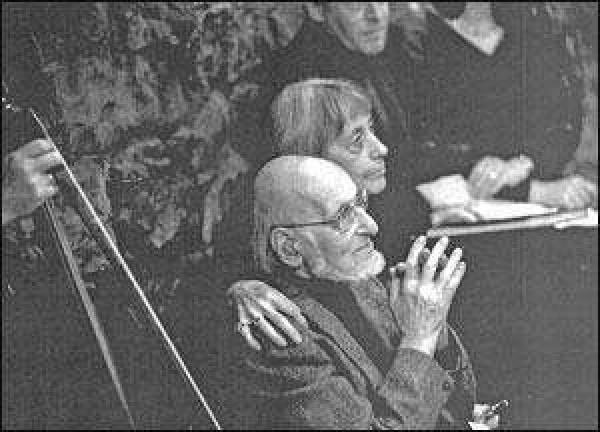Frederick Franck's hope in humanity

An appreciation by Richard W. Hull “What does it mean to be fully human?” That is the question the great Warwick humanist and polymath, Frederick Franck, posed to his millions of followers here and abroad in his writings, paintings and sculptures. Though his extraordinary works are found in the world’s preeminent libraries, museums, galleries and public parks, his greatest work of art is located at his homestead along the banks of the Wawayanda in Warwick, New York. It is in the form of an intimate complex of small galleries, sculpture gardens and a sanctuary built over an 18th century grist mill. With his own hands and architectural genius, Dr. Franck, an oral surgeon by education, transformed a garbage dump and derelict saloon into a repository for his works of art and a sylvan center for concerts of classical music. He would call it Pacem in Terris’ or Peace on Earth in homage to Pope John XXIII and his Vatican Encyclical. Completed and opened to the public in 1966, he described it as a peaceful “oasis of sanity and humanness.” It is indeed a place where humankind can meditate, reflect and reconnect with the natural and spiritual worlds. It is where one can come into contact with the inner workings of life in all its forms. Here one encounters an ecumenism that is deeply spiritual and transreligious. Hinduist, Buddhist, Taoist and Judeo-Christian world views converge in this unique spiritual utopia bisected by the serene Wawayanda creek of ancient Indian renown. Frederick Franck, who passed away in early June at age 97, has left us with an amazing place of pilgrimage where people of all religions, philosophies and lifestyles can discover what it takes to be truly human. Through his prodigious works, deeds and teachings, Dr. Franck conveyed a reverence for life in all that dwells around us. Here was a humanist of extraordinary insight, empathy and compassion. Remarkably, despite all the violence and hatred in our contemporary world, he remained optimistic for the future of mankind. He believed passionately and almost compulsively that in every living thing there is the potential for goodness and an indomitable will to survive against all odds. He was convinced that through the “awakened eye” humanness can prevail over inhumanity. This hopeful message assumes special poignancy and urgency in the face of escalating religious extremism. Frederick Franck has given us all an opportunity to find the human spirit that dwells within us and to make us instruments of peace and solidarity. Though he will be sorely missed, it is incumbent on all of us to ensure that Pacem in Terris will remain a lasting legacy and a beacon of hope in a world of too much enmity. Prof. Richard W. Hull, a professor of history at NYU, a member of the Historical Society of the Town of Warwick and the author of a number of books and publications, including the “History of Warwick, 1697-1997” (Royal Fireworks Press, 1997).